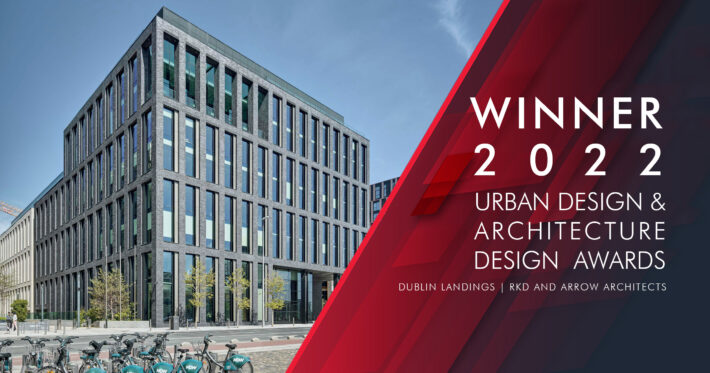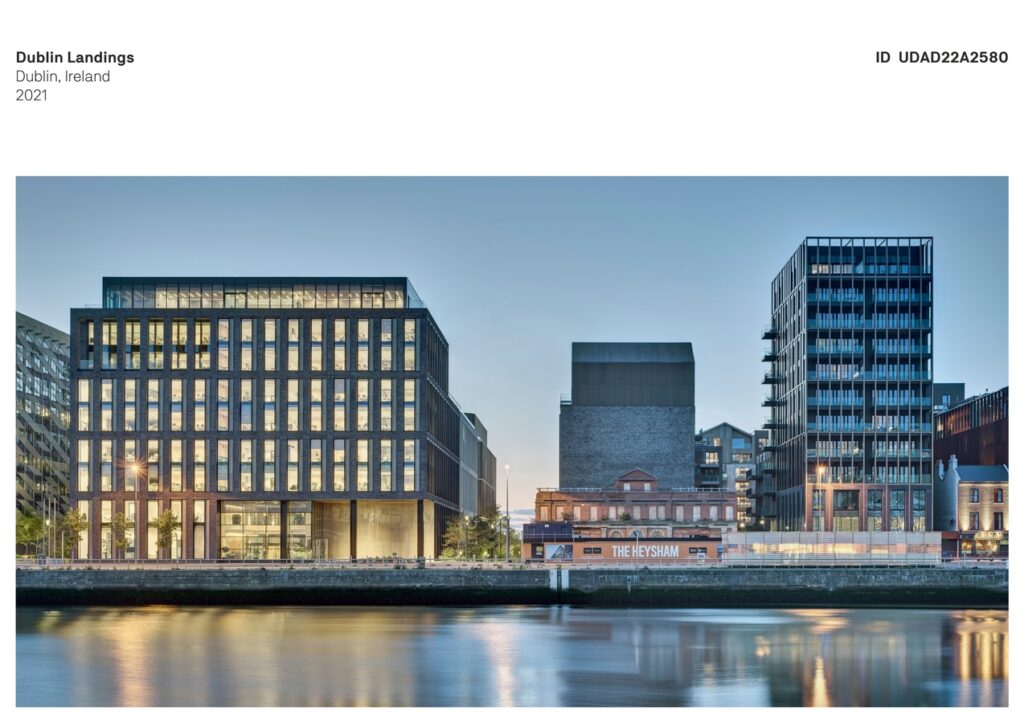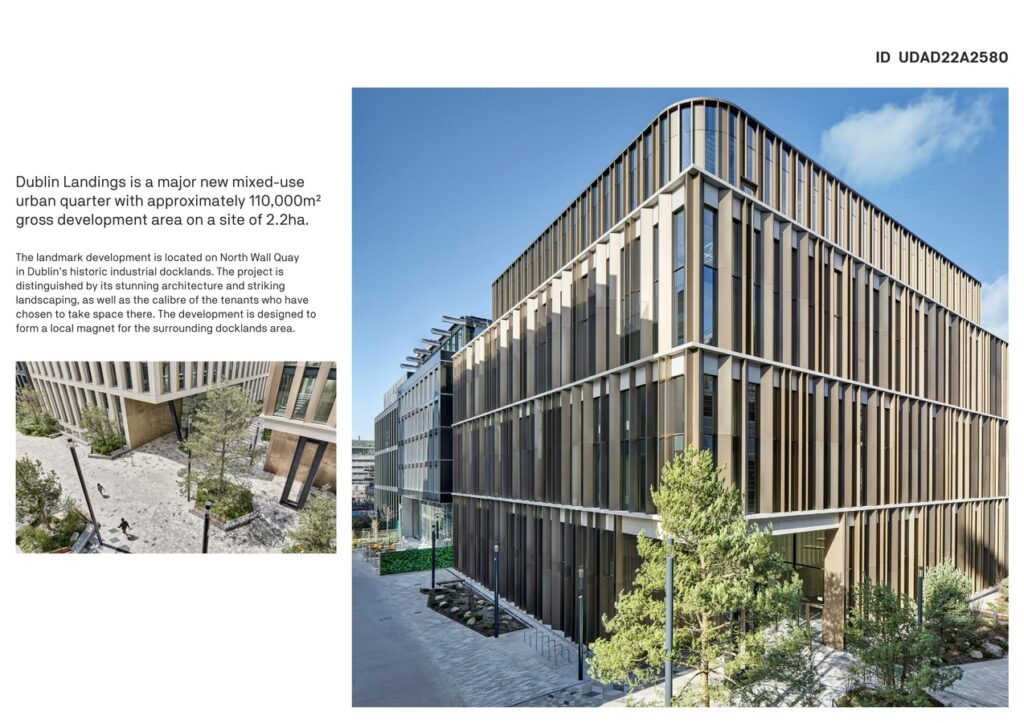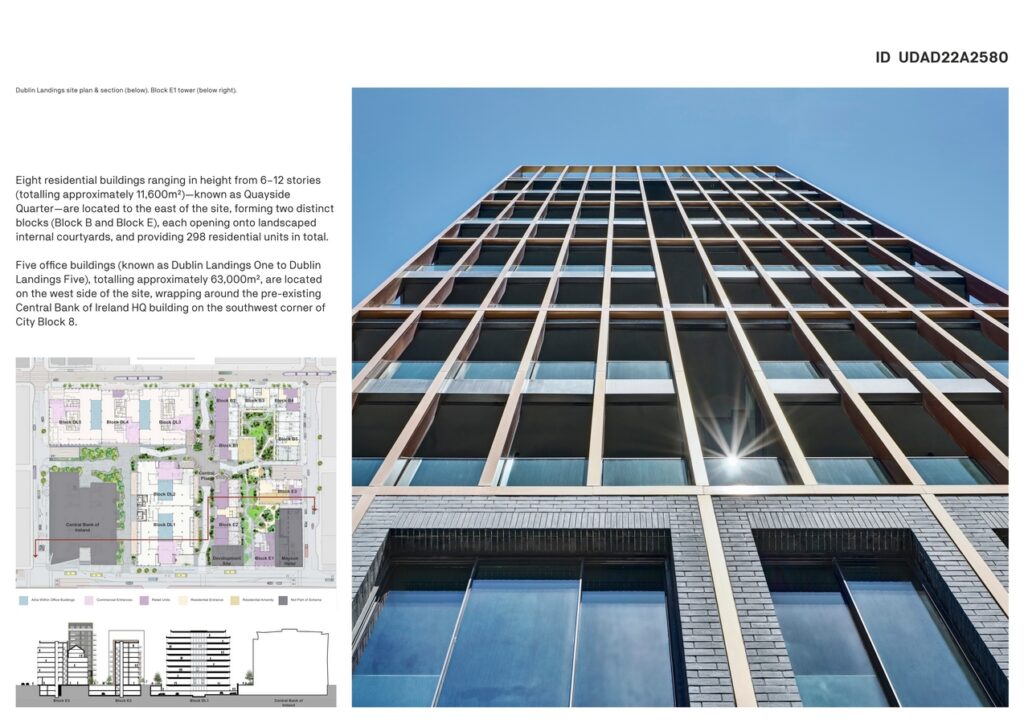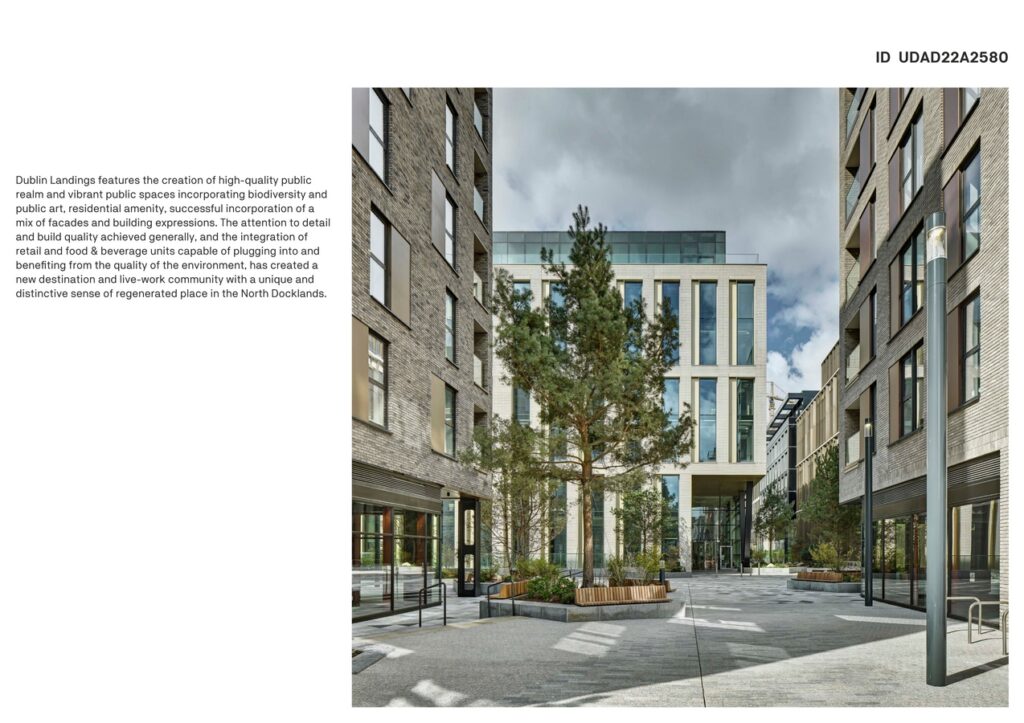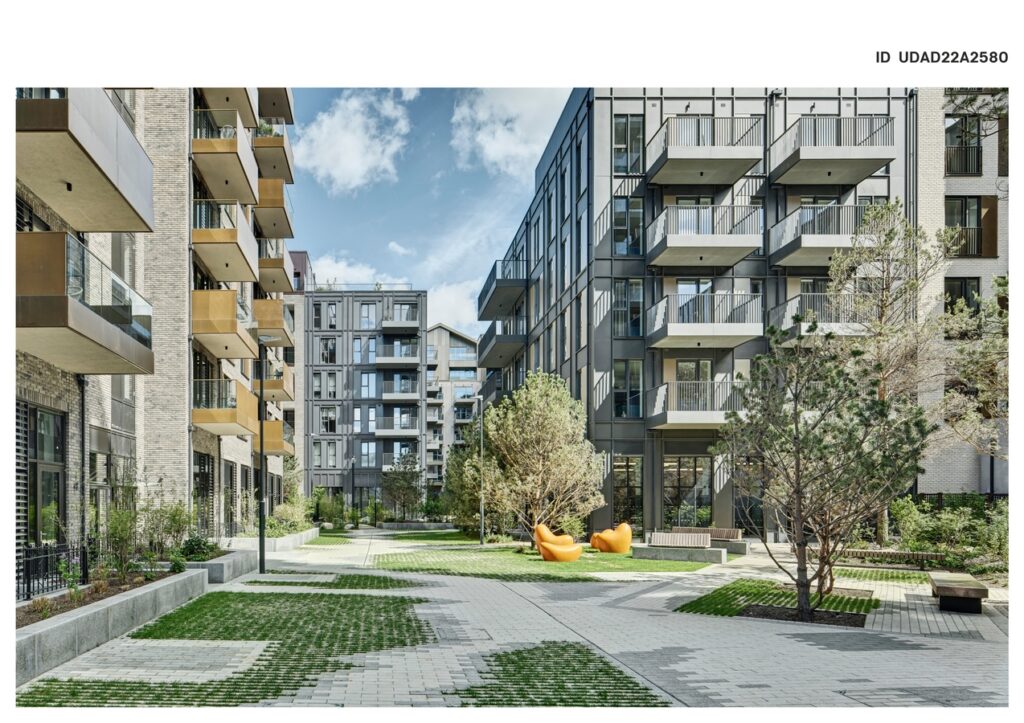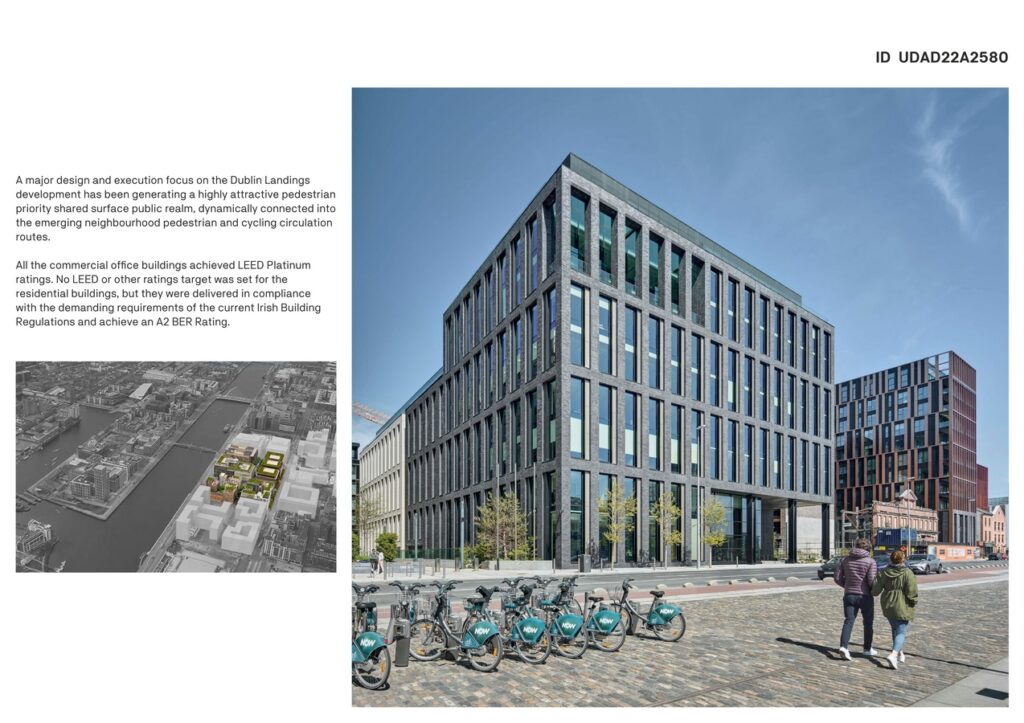Dublin Landings is a major new mixed-use urban quarter with approximately 110,000m2 gross development area on a site of 2.2ha. The landmark development, carried out for Ballymore Properties, is located on North Wall Quay in the Dublin Docklands. The project is distinguished by its stunning architecture and striking landscaping, as well as the calibre of the tenants who have chosen to take space there. The development is designed to form a local magnet for the surrounding Docklands area.
Urban Design & Architecture Design Awards 2023: Discounted Entries Open Now! Save $50
Super Early Discount – 1st May 2022 to 30th June 2022 – $199 = $149
Gold 🏆 Winner
Urban Design & Architecture Design Awards 2022
Dublin Landings
Mixed-Use Architecture Built
Firm
RKD and Arrow Architects
Architect/Designer
John Hanley (RKD) and Ulrik Raysse (Arrow Architects)
Design Team
Client: Ballymore | Architect / Assigned Certifier / Design Certif ier: RKD / Architectural Sub-Consultant: Arrow Architects | Project Manager: Interactive Project Managers | Quantity Surveyor: Scollard Doyle | Landscape Architects: Bernard Seymour Landscape Architects | M&E Engineers: Homan O’Brien | C&S Engineers: OCSC | Façade Engineers: Arup
Location
Dublin Landings, North Wall Quay, Dublin 1, Ireland
Country
Ireland
Photographer/Copyright
©Enda Cavanagh, Nick Patterson & others via RKD
Five office buildings (known as Dublin Landings One to Dublin Landings Five), totalling approximately 63,000m2, are located on the west side of the site, wrapping around the pre-existing Central Bank of Ireland HQ building on the southwest corner of City Block 8. Eight residential buildings ranging in height from 6–12 stories (totalling approximately 11,600m2)—known as Quayside Quarter—are located to the east of the site, forming two distinct blocks (Block B and Block E), each opening onto landscaped internal courtyards, and providing 298 residential units in total. The tallest block provides a dramatic riverfront residential tower. In addition, 11 no. retail/F&B units and a retail kiosk are provided, all over two basement levels of carparking. The project is complete, with the last residential building finished in June 2021.
Dublin Landings features the creation of high-quality public realm and vibrant public spaces incorporating biodiversity and public art, residential amenity, successful incorporation of a mix of facades and building expressions. The attention to detail and build quality achieved generally, and the integration of retail and F&B units capable of plugging into and benefiting from the quality of the environment, has created a new destination and live-work community with a unique and distinctive sense of regenerated place in the North Docklands.
A major design and execution focus on the Dublin Landings development has been generating a highly attractive pedestrian priority shared surface public realm, dynamically connected into the emerging neighbourhood pedestrian and cycling circulation routes. The mix of commercial, residential, and retail at Landings, together with the location and expression of building entrances, is designed to concentrate and focus day and evening activity on the main north/south public pedestrian street, Slate St, which leads down to the Liffey at its south end.
While the street is designed to accommodate delivery & emergency vehicle access, extensive planting has been incorporated to animate the space, and to create a series of intimate urban spaces which respond to the shops, cafes and grandly scaled office entrances, while creating attractive, sunny locations for integral seating as well as for outdoor café terrace areas. The aim is to create bright and animated public spaces, so that the development becomes a local attraction as a place to experience a new Dublin urbanity, also underpinning the viability and draw of the retail and F+B offerings integrated into the scheme.
All the commercial office buildings achieved LEED Platinum ratings. No LEED or other ratings target was set for the residential buildings, but they were delivered in compliance with the demanding requirements of the current Irish Building Regulations and achieve an A2 BER Rating.


